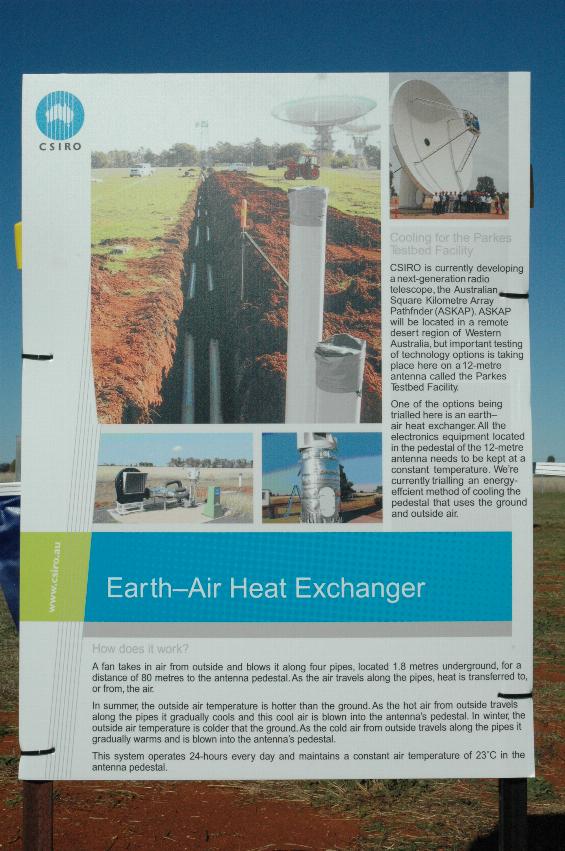

CSIRO is currently developing a next-generation radio telescope, the Australian Kilometre Square Array Pathfinder (ASKAP). ASKAP will be located in a remote desert region of Western Australia, but important testing of technology options is taking place here on a 12-metre antenna called the Parkes Testbed Facility.
One of the options being trialled here is an earth-air heat exchanger. All the electronics equipment located in the pedestal of the 12-metre antenna needs to be kept at a constant temperature. We're currently trialling an energy-efficient method of cooling the pedestal that uses the ground and outside air.
A fan takes in air from the outside and blows it along four pipes, located 1.8 metres underground, for a distance of 80 metres to the antenna pedestal. As the air travels along the pipes, heat is transferred to, or from, the air.
In summer, the outside air temperature is hotter than the ground. As the hot air from outside travels along the pipes it gradually cools and this cool air is blown into the antenna's pedestal.
In winter, the outside air temperature is colder than the ground. As the cold air from outside travels along the pipes it gradually warms and is blown into the antenna's pedestal.
The system operates 24-hours every day and maintains a constant air temperature of 23°C in the antenna pedestal.